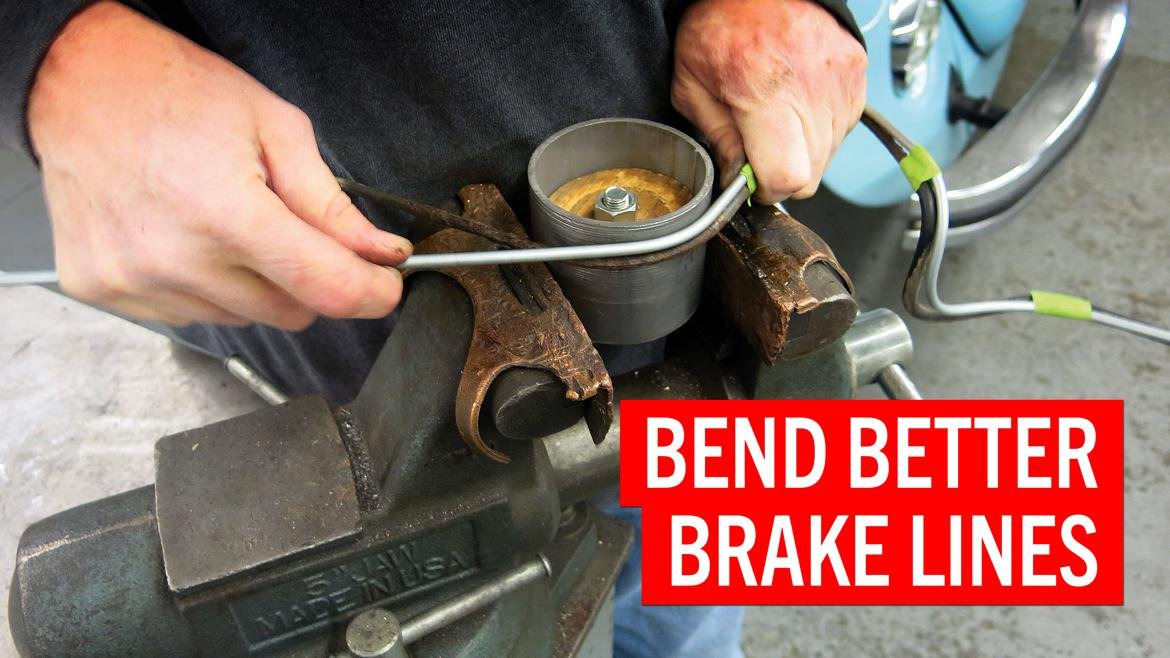
Sure initiatives appear to instill nervousness in even probably the most hardcore fanatics. Wiring most likely takes high prize on this class, with brake plumbing operating a detailed second.
What makes brake plumbing such a headache? We strongly consider it’s the standard of the instruments. Most brake instruments are simply junk, and junk instruments create junk outcomes. It’s simply that easy.
We’ve efficiently bent up tons of of brake strains through the years. Our predominant secret? We don’t use bending instruments. As a substitute, we’ve invested these funds in a high-quality flaring software. To study the remainder of our secrets and techniques, simply observe alongside as we make a brake line for one among our challenge vehicles.
Step 1:
We purchase our brake strains two methods. Normally we simply purchase it in straight sections from our pleasant native auto components retailer, the place it’s typically offered in numerous lengths starting from about 12 to 60 inches. If we’re fortunate, we are able to discover the precise size we want and keep away from having to chop and flare one finish. (We’re not often fortunate.)
Once we’re tackling a giant job, we purchase our brake line in bulk coils of 25 or 50 ft. We frequently select stainless-steel for these initiatives as a substitute of the plated delicate metal that’s out there within the straight sections. Not all stainless strains are created equal, so we’ve settled on Basic Tube as our go-to supply. Their strains are annealed for simpler bendinq.
Step 2:

Right here’s one other huge secret: All the time work from a sample. If now we have an previous line to repeat, that’s the simple button. If we don’t, we make our personal sample, normally out of 1/16-inch welding rod.
Step 3:

For this alternative, we began with a 60-inch line sourced from our native NAPA retailer. Utilizing the previous line as a reference, we made our preliminary bends by hand, working from one finish to the opposite.
Step 4:

This photograph reveals two extra methods. Secret 3: As a substitute of utilizing a software, we merely bend the tube round a discovered object that occurs to have the correct radius. Secret 4 solves what we consider is the largest brake plumbing situation for most individuals: As we transfer alongside the line to make new bends, we tape it to the previous line. This retains it from twisting and dropping its 3D reference.
Step 5 and 6:

Shifting down the line, we proceed to make use of discovered objects as bending instruments. On this case, it’s a cast-off piece of 3-inch-diameter tubing.
Step 7:

Secret 5: At any time when we simply can’t completely duplicate a bend, we stray from the sample a bit. For instance, this tight radius simply wouldn’t bend properly, so we made it bigger. Be aware that we nonetheless introduced the line again into the right place earlier than the subsequent bend. How did we all know we couldn’t obtain that tight radius? Secret 6: We tried it on a take a look at piece first. Observe and mock-ups make good.
Step 8:

Our new line is formally bent. Now the straight half simply wants a becoming and a flare.
Step 9:

Earlier than we choose up our flaring software, we keep in mind to put in the becoming, utilizing some tape to safe it. We gained’t point out what number of instances we’ve flared a line after which realized we didn’t have the becoming in place. So possibly this qualifies as Secret 7: Don’t neglect the becoming first.
Step 10:

Our flaring software of alternative is Basic Tube’s Common Hydraulic Flaring Instrument Equipment. We begin the method through the use of the three/16-inch holding fixture to clamp our line.
Step 11:

The fixtures will transfer a bit, so it’s vital to precisely line them up. That’s Secret 8: Be very fussy and compulsive along with your flaring software. That is particularly vital if you happen to can’t afford a high-quality software. Low cost instruments will work okay if you happen to’re finicky (and don’t thoughts redoing issues a number of instances).
Step 12:

As soon as the fixtures are lined up, we clamp them in place.
Step 13:

We insert the primary die into the software. This die flares the within of the line.
Step 14:

The hydraulic pump presses the die on the line.
Step 15:

We insert the second die and once more pump the software. This die provides the ultimate form to the flare.
Step 16:

The consequence is an ideal flare that gained’t leak.
Step 17:

And the completed line is able to go within the automobile.
Trending Merchandise




